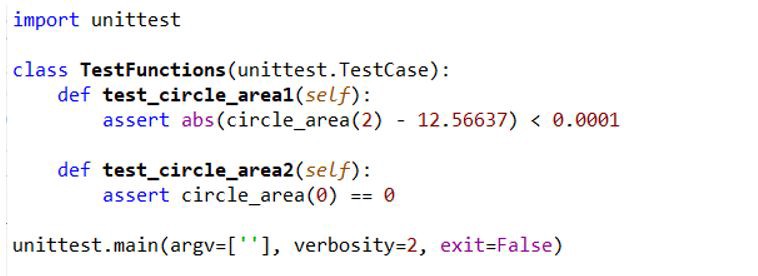 {width="6.268055555555556in"
height="2.282638888888889in"}
{width="6.268055555555556in"
height="2.282638888888889in"}Python, flask, Docker, AWS EC2.
Model serialized into pickle file. Inference call (predict()) takes features as e.g. numpy array.
FLask is good to build a web service to expose the predict call over URL rest API.
This is flask_code.py:
# Serve model as a flask application
import pickle
import numpy as np
from flask import Flask, request
model = None
app = Flask(__name__)
# load to global
def load_model():
global model
# model variable refers to the global variable
with open('iris_trained_model.pkl', 'rb') as f:
model = pickle.load(f)
@app.route('/')
def home_endpoint():
return 'Hello World!'
@app.route('/predict', methods=['POST'])
def get_prediction():
# Works only for a single sample
if request.method == 'POST':
data = request.get_json() # Get data posted as a json
data = np.array(data)[np.newaxis, :] # converts shape from (4,) to (1, 4)
prediction = model.predict(data) # runs globally loaded model on the data
return str(prediction[0])
if __name__ == '__main__':
load_model() # load model at the beginning once only
app.run(host='0.0.0.0', port=80)
Now can run the web service locally. run python app.py check browser on 0.0.0.0:80 and See the home endpoint output. Port 80 is privileged: used port 5000 if 80 is protected.
curl -X POST \
0.0.0.0:80/predict \
-H 'Content-Type: application/json' \
-d '[5.9,3.0,5.1,1.8]'
Allows deployment on any cloud VM / OS
Docker file for docker daemon to build the docker image:
FROM python:3.6-slim
# take files from current folder to deploy folder.
COPY ./app.py /deploy/
# lists versions of python packages needed
COPY ./requirements.txt /deploy/
COPY ./iris_trained_model.pkl /deploy/
# change working directory
WORKDIR /deploy/
# expose python packages to the requirements file
RUN pip install -r requirements.txt
# make port 80 visible outside the container.
EXPOSE 80
ENTRYPOINT ["python", "app.py"]
Build the docker image:
docker build -t app-iris .
# Run the docker image
# -p option maps port 8 locally to port 80 on the docker instance.
docker run -p 80:80 app-iris .
Test locally in browser.
Edit security groups to allow http traffic on port 80 to public. launch the EC2 instance
ssh to EC2, pass the key pair file .pem
ssh -i /path/my-key-pair.pem ec2-user@public-dns-name
Install docker on EC2 instance
test with
docker info
Copy all files needed to build image to EC2: requirements, app.py, pickle.
scp -i /path/my-key-pair.pem file-to-copy ec2-user@public-dns-name:/home/ec2-user
Build and run the Docker image (as for local)
Test the home endpoint with public dns name
Try a curl request from local to the server end point
curl -X POST \ public-dns-name:80/predict \ -H 'Content-Type: application/json' \ -d '[5.9,3.0,5.1,1.8]'
Native so don't need to install. Dump() method writes binary model to a file, load() to read. Write with 'wb'
Better for large datasets
import the sklearn.externals.joblib package
do joblib.dump() to file, and load to open.
Both are not proecteded against malicious code.
Write your own python function to load the model from the file and wrap the predict function. Input is the params, return the result.
Firefly is a module to turn a function into a service. Good for a prototype, Alternatives are Flask and Flacon which are more heavy duty.
Use Firefly to turn the function into a service, and test locally.
Bind the function to a port on localhost:
firefly app.predict --bind 127.0.0.1:5000
curl can make a post request to this port
$ curl -d '{"text": "Please respect each other."}' \ http://127.0.0.1:5000/predict
A docker container runs an application in an isolated environment, including dependencies, can be shipped as an image for simple setup. Does operating system level abstraction, and creates a virtual environment on Windows or Linux. Don't need to spend time worrying about op system issues.
Set up the Dockerfile with the instructions to load and run the file, and bind with firefly and expose. Instructions to setup the whole thing, a bit like a dev environment.
Run the container.
Send a request to the port with the data.
Can run locally or deploy and scale in enterprise cluster.
containers are mini VMs. Technically threads created by docker commands.
Images are snapshots of containers. Running state saved using docker CLI or generated with a dockerfile.
Dockerfile is an automated setip file.
Use e.g. Heroku to deploy for wide access. Free basic membership. Give it the docker file and it hosts the service.
Create a class inherited from TestCase
 {width="6.268055555555556in"
height="2.282638888888889in"}
{width="6.268055555555556in"
height="2.282638888888889in"}
If you are using a Jupyter notebook, you can just place the unit tests in the final cell of the notebook.
Used to generate documentation from docstrings.